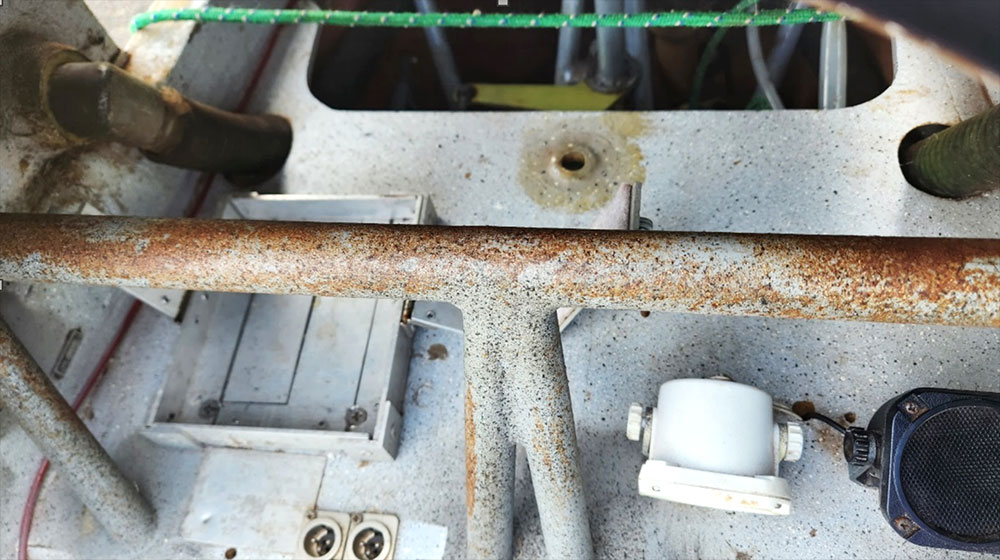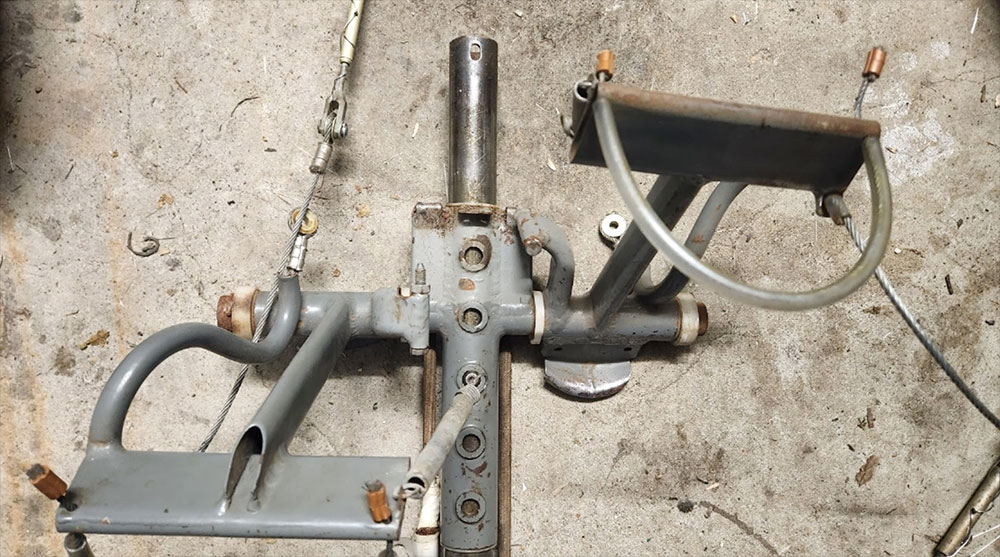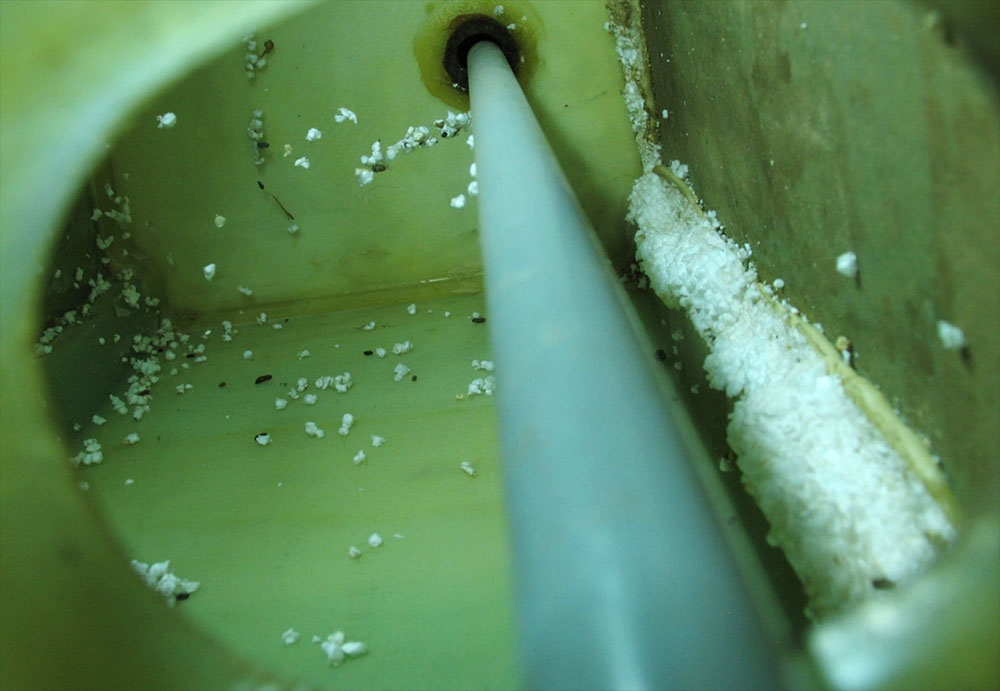The continuation of wet weather across large areas of Australia has caused a number of airworthiness challenges. Sailplanes are being stored in hangars and trailers without being flown for extensive periods of time. These conditions have brought forward a number of reports of corrosion being found during annual inspections.
In this example, a Standard Jantar that had been stored in its trailer was brought out for an Annual Inspection. The early signs weren’t promising, and corrosion was immediately visible in the cockpit.
By Anthony smith
Chair Airworthiness department

Figure 1: Cross bar and support tubing showing surface corrosion.
Corrosion along the fuselage cross bar was immediately evident, but it later became apparent that the rudder pedals had also seized as a result of corrosion. The axles that the pedals rotate on had rusted.

Figure 2: The pedals had all but seized due to corrosion.
This prompted a very thorough inspection of all the steel work in the sailplane.
It is important to remember that corrosion will occur on exposed steel. It is better to be prevent rust from occurring by ensuring that the steel has its paint patched up regularly rather than patching up the rust later. Steel with high wear areas become problematic. While the sailplane is in use, any rust that forms will be worn off very quickly. When the sailplane is inactive for a period of time, these bare areas can corrode quite quickly depending on the conditions. High humidity is one of the worst.
The storage conditions become critical. Even though the trailer may be well sealed and rain proof, high humidity can cause condensation (dew) to form inside the trailer and inside the sailplane. Conditions where a heavy dew occurs overnight can cause corrosion problems when you do not expect it.
The other problem that we are now receiving reports about is rodents. In many areas the wet weather has flushed the rodents out of their normal abode and they are now seeking shelter in hangars and in sailplanes.

Figure 3: Evidence of rodents in an ASK-21 wing.
Rodents can be particularly troublesome. They need to gnaw to keep their teeth short and will gnaw on pneumatic tubing and wiring – often in the most inconvenient or inaccessible corner making inspection extremely difficult. The damage to wires can be hazardous. Once the wiring insulation is damaged, an electrical short may occur which can cause a fire – not something you want to happen in flight.
In vintage sailplanes, the rodents will cheerfully gnaw on the wooden structure and can cause quite a bit of damage.
The other problem is the rodent urine is acidic and fully capable of causing corrosion to start, particularly if the paint condition is poor – another way that the wet weather is causing corrosion!































